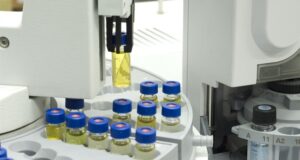
Acute-on-chronic liver failure (ACLF) is a life-threatening condition characterized by acute deterioration of liver function in patients with pre-existing chronic liver disease. It is often accompanied by multiorgan failure and systemic inflammation, with high short-term mortality rates. The triggers for ACLF include bacterial infections, acute alcoholic hepatitis, and ischemic hepatitis, leading to the release of pro-inflammatory mediators. These systemic inflammatory responses result in immune dysfunction, contributing to the progression of the disease.
Recent research has emphasized the metabolic changes in immune cells and the body’s catabolic response to meet the energy demands during ACLF. These metabolic alterations, particularly in immune cells, disrupt mitochondrial functions and lead to the accumulation of harmful metabolites, further impairing immune responses. Understanding these metabolic pathways and their effects on immune function offers new therapeutic targets for managing ACLF.
Immune cell alterations in ACLF
ACLF patients exhibit significant alterations in their immune cell populations. These include an increase in white blood cells, predominantly neutrophils and monocytes, and a decrease in lymphocytes and natural killer (NK) cells. Neutrophils, although elevated in number, show functional impairments such as reduced phagocytic activity and decreased pathogen clearance. Furthermore, neutrophils in ACLF patients tend to overproduce neutrophil extracellular traps (NETs), which contribute to tissue damage.
Monocytes and macrophages also undergo significant changes. These cells exhibit increased immunosuppressive phenotypes, including reduced antigen presentation and impaired phagocytosis. In ACLF, liver-resident Kupffer cells are often depleted and replaced by immunosuppressive monocyte-derived macrophages, contributing to a state of immune paralysis.
Other immune cells, including dendritic cells and T-cells, are also dysfunctional in ACLF. Dendritic cells display impaired maturation and cytokine secretion, which hampers their ability to activate T-cells. Additionally, there is an imbalance between T-helper 17 (Th17) cells and regulatory T (Treg) cells, with a lower Treg/Th17 ratio being linked to worse outcomes.
Metabolism in ACLF
Metabolic reprogramming is a central feature of ACLF. In immune cells, the metabolic pathways shift from oxidative phosphorylation (OXPHOS) to glycolysis, the pentose phosphate pathway (PPP), and glycogenolysis. This metabolic shift supports the increased energy demands of activated immune cells, allowing them to produce pro-inflammatory cytokines and chemokines essential for pathogen clearance.
However, mitochondrial dysfunction, a hallmark of ACLF, results in impaired energy production. Key metabolic intermediates such as itaconate accumulate, further suppressing immune responses by inhibiting mitochondrial enzymes. Additionally, amino acid metabolism is altered in ACLF, with anabolic processes favoring nucleotide and protein synthesis to meet the biosynthetic demands of immune cells.
Peripheral catabolic metabolism
ACLF induces extensive peripheral catabolic metabolism, driven by neurohumoral responses that activate the hypothalamic-pituitary-adrenal axis. This results in glycogenolysis, proteolysis, and lipolysis, releasing essential nutrients to support immune cells’ energy requirements. However, this catabolism depletes peripheral organs, contributing to muscle wasting, mitochondrial dysfunction, and organ failure.
Impact of metabolites on immune function
Metabolite imbalances play a critical role in immune cell dysfunction during ACLF. Elevated lactate levels, a common feature in ACLF, suppress immune responses by inhibiting key glycolytic enzymes. This lactate accumulation also promotes an anti-inflammatory phenotype in macrophages, reducing their ability to clear infections.
Other metabolites, such as lysophosphatidylcholine (LPC) and ketone bodies, also influence immune function. LPC levels decline in ACLF, contributing to an immunosuppressive environment, while ketone bodies, normally alternative energy sources, are reduced, depriving peripheral tissues of critical energy.
Current status of research on targeted metabolic regulation
Targeted metabolic regulation offers promising therapeutic strategies for ACLF. Immunotherapy, including the use of mesenchymal stem cells (MSCs) and granulocyte colony-stimulating factor (G-CSF), has shown potential in improving immune function and liver regeneration. Furthermore, metabolic modulators targeting lactate production and gut microbiota regulation are being explored to mitigate ACLF progression.
Conclusions
ACLF is characterized by severe immunee dysfunction and metabolic alterations. The reprogramming of immune cells and the catabolic state of peripheral organs lead to a complex metabolic environment that exacerbates immune suppression. Understanding these pathways and targeting them therapeutically could provide novel approaches to treating ACLF. Metabolomics and immunotherapy are at the forefront of current research, offering hope for improved outcomes in ACLF patients.
Source:
Journal reference:
Zhang, D., et al. (2024). Metabolic Dysregulation and Metabolite Imbalances in Acute-on-chronic Liver Failure: Impact on Immune Status. Journal of Clinical and Translational Hepatology. doi.org/10.14218/jcth.2024.00203.




